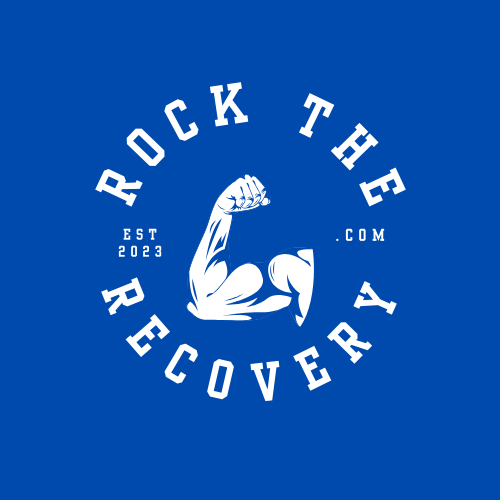Home and Support:
Before you jump into the car and drive off to the hospital there’s one more major point of action to tackle. Get your home and support systems ready. When you first get home, you are likely going to be worse in some ways than you are now. Let that marinate for a minute. That will quickly change, but we need to remember that to be discharged home, there needs to be a safe plan in place. Without this it could quickly become a very unsafe or expensive venture.
Home set up and safety: It’s time we take a close look at your home. Some of these tasks might need to be started months in advance to allow for a handyman to get you set up for success. One major example are those two steps to enter your home that you’ve likely been struggling with for the past few months, maybe years? Well now is the time to finally call over your handyman to put in a railing (or second rail) or grab bar. Another location that needs a long look is your bathroom. Grab bars in the shower for instance, need to be drilled into tile and often need a pro. The last thing you want your family to be doing while you are in the hospital is to be at home calling contractors and getting no response; when they should be at the hospital catering to your every need and whimsy!
Other home points of consideration: Are you going to stay on one floor? If so, you will need to avoid staying on a low/soft couch; it could be impossible to get back up from it. Do you need to buy a new firmer recliner or lift chair? What do your kitchen chairs look like, are there arms (great), wheels (not great)? Does a walker fit into that small powder room door? If not, can you take the door off to make it fit or maybe a well-placed grab bar? Are you comfortable using a commode by the bed instead? If so, who is emptying it? While on that topic who is doing your cooking and driving? You won’t be driving until your surgeon clears you, which is typically after you’re done with your Rx pain meds (often longer for Right TKR’s.) Do you know how to use Instacart (food delivery services)? There’s a lot to plan ahead for.
Support: One of the major implications to your recovery is going to be your support team. By this I don’t mean your Nurse and Physical Therapist. These are the people who will be cooking your meals, driving you to your appointments, possibly putting on your shoes? For some this person might be obvious, but for others it may not. If you are struggling to find assistance, know that you are likely going to rehab prior to going home. If you don’t have someone to drive you to appointments, then you may want to budget for Uber’s or medical transport, and having your groceries delivered to your door through an app. A stocked freezer with prepared meals is a good idea as well.
Typically if you are looking to go the rehab route here are some factors insurance companies look at before approving your stay. Do you live alone, or do you have limited outside help? Are there any major physical barriers to your home, like a third floor walk up apartment for instance? Do you have any comorbidities (other diagnosis) or did you have any complications in the hospital? Finally, what has the evaluating Physical Therapist recommended when they come to see you. Make your case, and don’t leave out any of the water works that are listed above if it can help you.
Insurance companies are becoming more and more stingy about approving rehab stays after TKRs. Even when you are approved , insurance may cut you prior to you being ready for a safe discharge. You can call your insurance company and they tell you they will cover 20 days (for instance); understand that means UP TO 20 days and often they will cut you after 8. Most people don’t realize this, and they won’t tell you this. Your Therapist’s opinion does not matter at this point either. If you do end up needing more Therapy before you are safe to go home, you could be left with a hefty bill depending on the facility. Where I work it is north of $600/day. This is why it is important to have your home ready, and your supports in place before showing up for surgery day. This is also why it is important to work hard each day with Physical and Occupational Therapy. You cannot be discharged home until there is a safe plan in place, otherwise you are leaving “against medical advice.” Know your insurance coverages, so you won’t be blindsided later on. Consider reading guide to rehab stays (coming soon).
If you go straight home from the hospital, you’ll need more help upfront if you go home on day 2 or 3 out from surgery. It won’t just be cooking and cleaning, your support may be asked to help you out of the car, assist you to get up the stairs, or help you dress or shower. This can be taxing to even the most loving of souls, so try and be understanding with each other; it can be hard on both parties.
Choosing to go home straight or to rehab is a very personal decision, and there won’t be any bias here. In times of C-diff and Covid you may feel better going straight to your home. However Rehab facilities are going to provide you with the assistance you need to stay safe; as well as most with 5-6x/week of PT and OT. Homecare will only afford you 2-3x/week of Therapies, and likely no aid services. Covid-19 has created staffing shortages at all stages of your recovery, and you will likely feel the negative effects of this no matter what your decision. If you are planning on going the short term rehab route, have a list 3-4 places you’d consider. Social work will help guide you through this in the hospital and let you know your options. You may even consider calling the admission office of the rehab facility prior to going to the hospital.
Lastly, let’s quickly talk about the equipment you will need. First and most important will be the walker. Initially this will be called a front wheeled walker. Not a rollator or 4 wheeled-walker. The reason for this is that the standardized or front wheeled walkers will provide you something to push down on to stabilize yourself and unweight your leg. It will be many weeks until you are ready for a rollator or cane. You can get this through most insurances at discounted price, but also know that there are many loan closets out there if you plan on using it temporarily. Unfortunately, other equipment you may need ie: commodes, shower chairs or benches are not covered by insurance and are not offered at loan closets. This you could order ahead of time if you would prefer, or you could wait to hear what you’ll need. The internet will oftentimes be much cheaper than a medical supply store. Just make sure what your order fits in the space you have! Above are links to visualize each product. Please avoid suction cup grab bars; and if you have space an over the toilet commode, I recommend this over a friction mounted raised toilet seat.
Well, you’re ready for your surgery! Last major choice to consider is when. Winter is many people’s choice as you don’t miss out on golfing, but if you do choose this time make sure you have an ice-free driveway upon return home and might mean longer time pent up in the house in Northern areas to avoid icy sidewalks.
Time to pack some comfortable slippers with treads and a back, as well as some loose fitting sweatpants or shorts. Get together a few sudoku books or novels you’ve wanted to read. Remember your extra-long charger. If you wear glasses or hearing aids, hold onto them for dear life. If you regularly wear any kinds of splints or orthotics, bring them with you, with your name on them. Don’t forget to bring a printout of the exercises you’ve been doing to show your PT. You can leave your walker at home, (we have plenty). Next up: Your First Few Weeks After Surgery.

